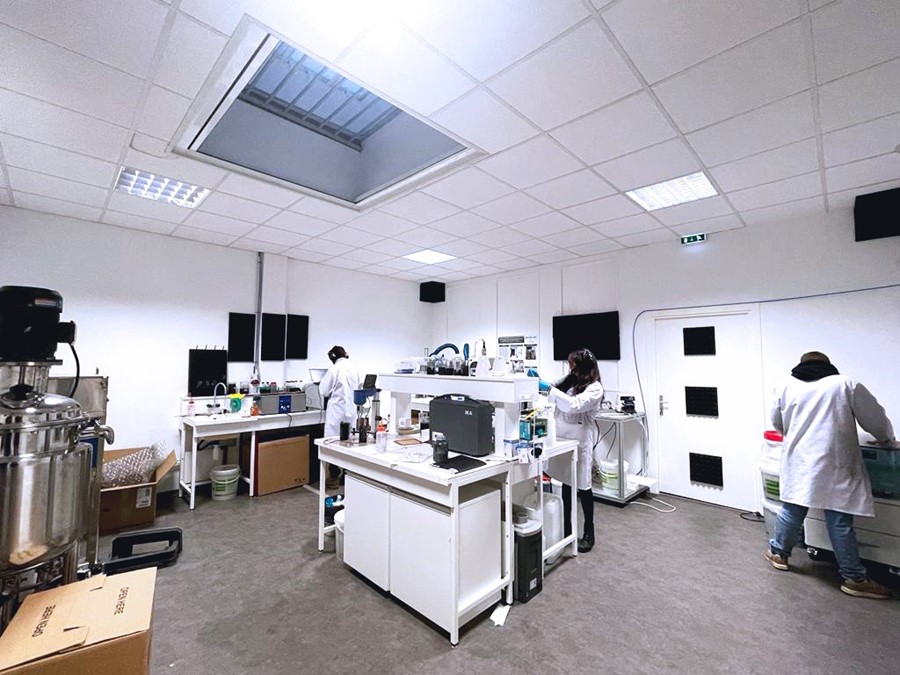Producing few-layer graphene in water
BLACKLEAF uses a simple method with just three ingredients
Graphene Flagship Associated Member BLACKLEAF was created in 2018 as a spin-off from the CNRS in Strasbourg (France). The award-winning company produces few-layer graphene with a simple method and aims to be as green as possible.
BLACKLEAF’s Business Development Engineer Hervé Krieger answers our questions.
Please tell us the story of this start-up company
BLACKLEAF was created based on the following observations: the graphene market is promising for the future and BLACKLEAF had the most innovative and green manufacturing process to become one of the leaders in this market.
Over the years, we raised our first seed funds and have been recognized at the highest level by the French government through calls for projects. BLACKLEAF was a recipient of the exclusive I-Lab Grand Prize in 2021 and the AAP France Relance award in 2022, which have both enabled us to achieve and validate the first stage of our development. We are now on a fast-track in our development thanks to the trust of many major industrial players and our dedicated and highly-qualified staff.
For the near future, we are discussing with various investors to reach a critical industrial size that meets our ambition to be a leader in this market, and for graphene to become a key material for the ecological transition and decarbonation of the industry.
What are your products?
We produce few-layer graphene in water at different levels of concentration (up to 200 g/L). Our standard batch has a concentration of 30 g/L. We have patented a unique way to manufacture 100% graphene film on any kind of surfaces, by using traditional coating equipment (e.g., spray gun, robot coater, etc.).
We also functionalize graphene and provide homogeneous dispersions in different matrices. Furthermore, our application studies meet the needs of our industrial clients by developing our own finished or semi-finished products that incorporate graphene.
What’s your unique selling point?
BLACKLEAF’s unique selling point is definitely our green process which allows us to produce few-layer graphene in water in a very simple way.
We only use three ingredients: water, graphite and an exfoliant to produce graphene through sonication. Our process for transforming graphite into graphene is 100% eco-responsible, without post-treatment or organic solvents.
Who are your target customers?
We are addressing the entire industry with a specific focus on aeronautics, aerospace, energy, defence, composites and construction. The key solutions developed by BLACKLEAF are applicable for heat management, energy storage, electrical and thermal dissipation, lubrication, and the substitution of pollutant in products that use graphene as a coating.
In addition, we are working on research topics for future applications of graphene.
How are you involved in the Graphene Flagship?
BLACKLEAF was funded 5 years after the launch of the Graphene Flagship by the European Commission. The work of the Flagship has been very helpful in understanding our competitive and industrial environment. It was a real time saver for us.
We have started collaborating with scientific experts, such as Health and Environment Work Package Deputy Alberto Bianco. In the future, we would like to accentuate our efforts to take part in the dynamics of the Graphene Flagship in a more active way to propose collaborative development topics or take part in projects led by Graphene Flagship's academic, industrial or institutional teams.
Our process for transforming graphite into graphene is 100% eco-responsible, without post-treatment or organic solvents.
Business Development Engineer at BLACKLEAF

BLACKLEAF’s laboratory in Strasbourg (France).




